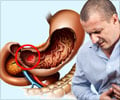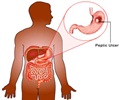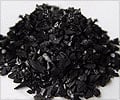Carbon monoxide improves effectiveness of antibiotic metronidazole that fights against H.Pylori, a bacteria that infects the stomach and causes peptic ulcers
- Carbon monoxide enhances the effect of the antibiotic metronidazole on H. pylori infection.
- Carbon monoxide makes bacteria more sensitive to the antibiotic.
- This may be a powerful tool to combat drug-resistance.
Carbon monoxide can improve the effectiveness of antibiotics and make bacteria more sensitive to antibiotic medication, according to recent research at the Georgia State University. The research team paired carbon monoxide with the antibiotic metronidazole and found carbon monoxide enhanced the efficacy of the antibiotic against H. pylori, a type of bacteria that infects the stomach and causes peptic ulcers.
"We always hear about the discussions of drug resistance. When we have drug resistance, it’s not because these bacteria will not respond to antibiotics anymore. Most of the time, it means there is decreased sensitivity. If you can resensitize bacteria or sensitize them, then that would allow you to either use a smaller amount of antibiotic or use the same amount that would kill many, many more bacteria."
A prodrug system of antibiotic (metronidazole), carbon monoxide, and a fluorescent molecule
Carbon monoxide is infamous for its toxicity at high concentrations, but it also has promising potential as a medical gas. Produced naturally in the human body, carbon monoxide is essential for survival and plays an important role in reducing inflammation, promoting cell proliferation and regulating cellular immune response to pathogens. Studies have found carbon monoxide has antimicrobial effects.
In this study, the researchers developed a prodrug system that releases three components: carbon monoxide, an antibiotic (metronidazole) and a fluorescent molecule used to monitor the release of carbon monoxide.
A prodrug is the precursor of a drug and must undergo a chemical conversion before becoming an active pharmacological agent. This prodrug system has a three-reaction sequence and becomes active when placed in water, which sets the reaction in motion.
References:
- Ladie Kimberly C. De La Cruz, Stephane L. Benoit et al. Click, Release, and Fluoresce: A Chemical Strategy for a Cascade Prodrug System for Codelivery of Carbon Monoxide, a Drug Payload, and a Fluorescent Reporter, Organic Letters DOI: 10.1021/acs.orglett.7b03348
















